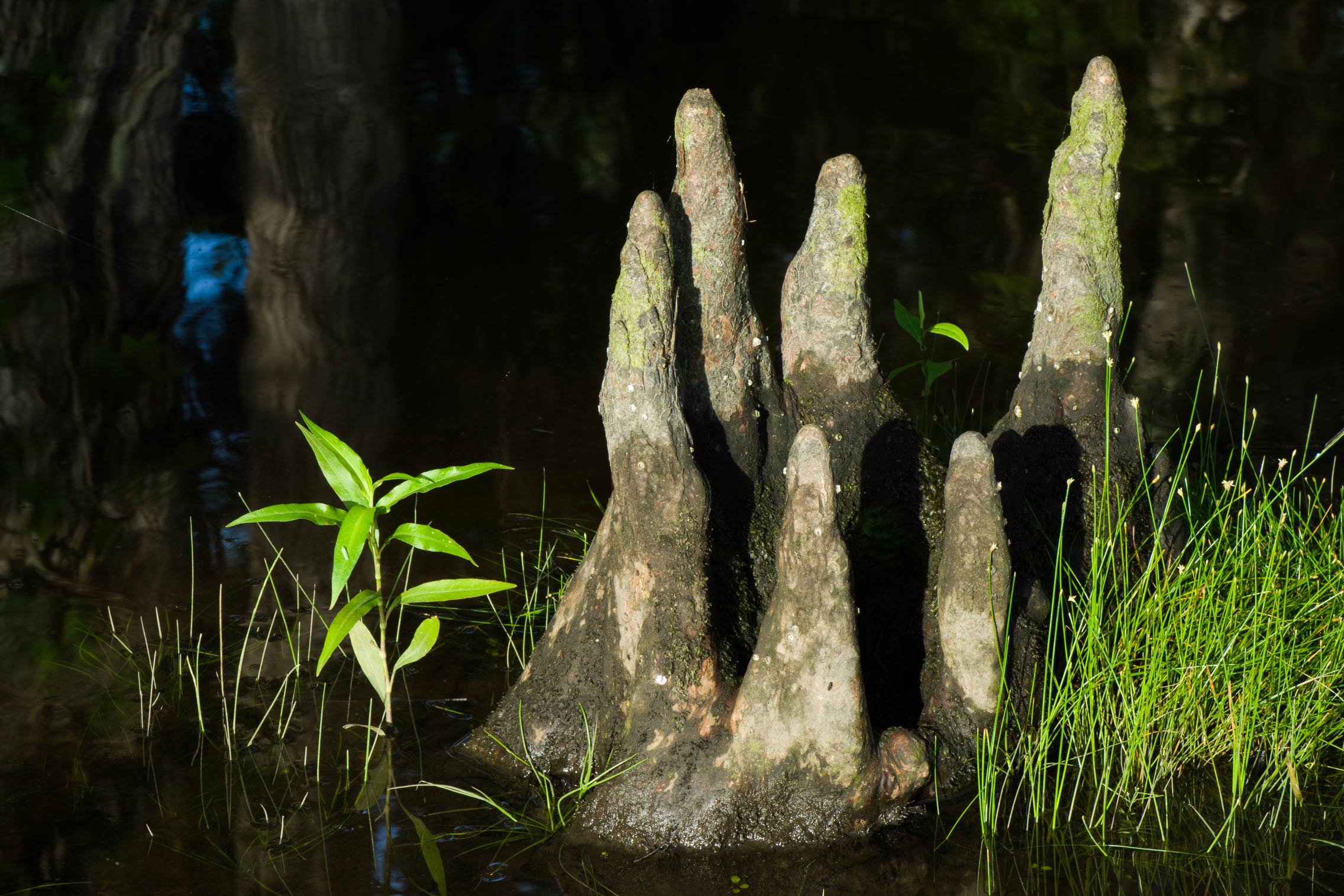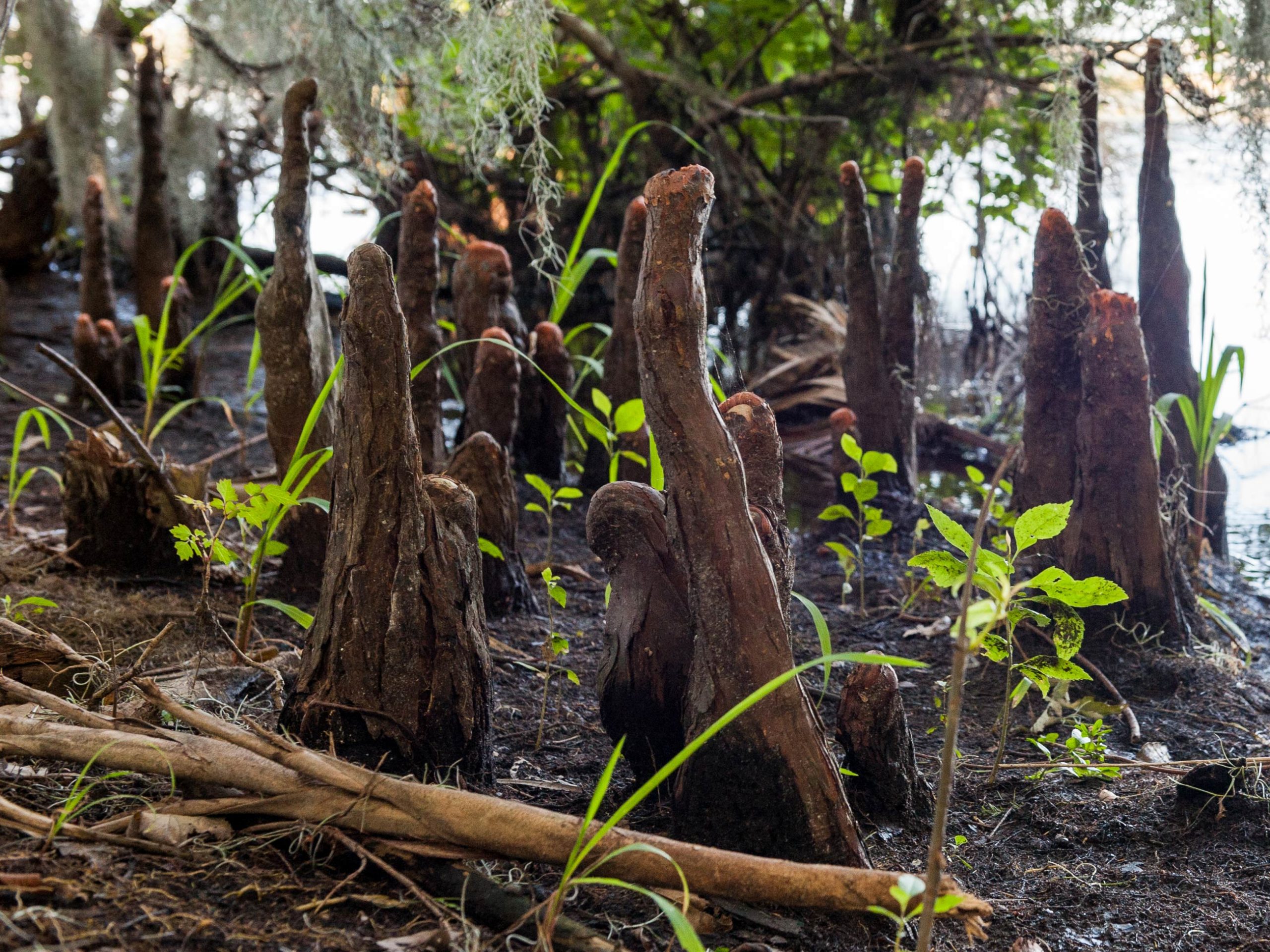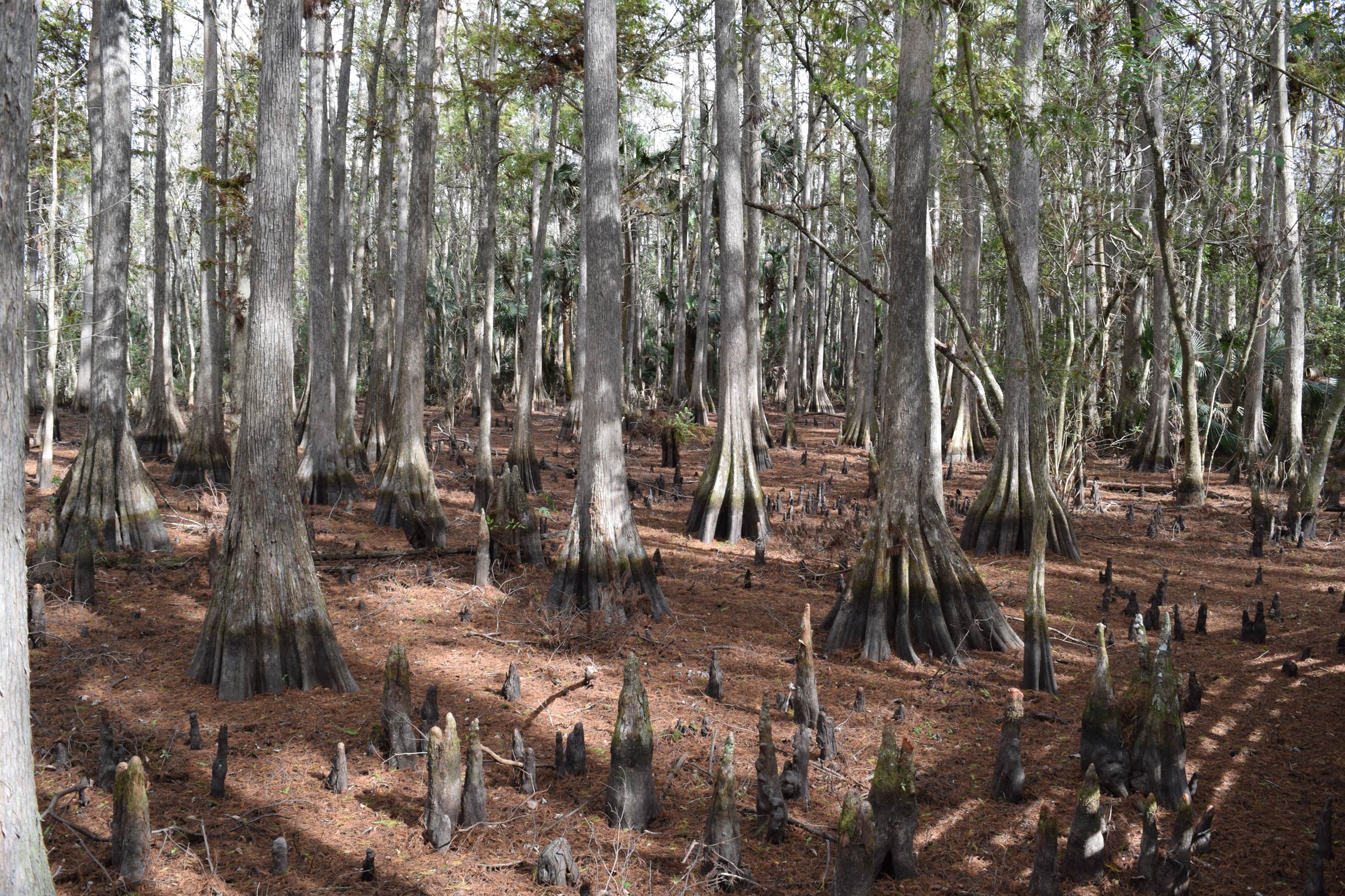Have you ever seen trees with knees?
Hardwood swamps can be otherworldly, especially when the glass-smooth, black water reflects the lurid reds and oranges of dawn or dreamy violet hues of twilight.
There’s something otherworldly — even a little spooky — about a bonafide swamp. The soaring cypress trees don’t simply hover overhead; they preside over the swamp in solemn legions, their knees often exposed above the waterline like wooden stalagmites. When water levels are high, cypress knees hide under the water ready to trip the even most careful and experienced “swamper.”
So, what exactly is the purpose of a cypress knee?
The mystery of cypress knees has kept botanists proposing theories for hundreds of years. Early botanists gave the knees a fancy name, “pneumatophores,” meaning “air roots,” They believed that knees allow the root system beneath the swamp water, access to air. In the absence of any evidence, this seemed a reasonable explanation, since other species like black mangroves exhibit similar adaptations. But more recent studies have concluded that there is no proof of gas exchange through the knees.
Today the more accepted theory is that cypress knees provide structural strength. Cypress in Florida grow in areas where the soils are soggy and relatively unstable, especially in areas prone flooding after storms and hurricanes. Growing tall and thin, one would expect them to topple during high winds or hurricanes, but that rarely happens. Most cypress trees will remain standing tall and straight even when they appear to be hanging on by mere threads at their bases. Still, more research is necessary before any final conclusions can be drawn.
Fortunately, you can explore this mystery firsthand by visiting District lands. Much of the land we own or manage (more than 700,000 acres) to protect water resources and natural systems include wetlands and swamps.
Looking for a swamp near you? It’s as easy as reading our property listing and looking for buzzwords and phrases like “swamp” “cypress dome” and “hardwood swamp.” Make sure to grab the essentials on your way out the door, such as bug spray, water and a cell phone or camera to shoot your artsy knee photos. We’ll see you at the swamp…and watch out for those knees!
Cypress knees protrude from the tannin-stained dark water in the District’s Bayard Conservation Area in Clay County.
A pair of clapping hands? Cypress knees protrude from the swamp during a dry spell at the District’s Lake George Conservation Area in Putnam and Volusia counties.
Scattered cypress knees can be seen throughout the District’s Fort Drum Marsh Conservation Area in Indian River County.








